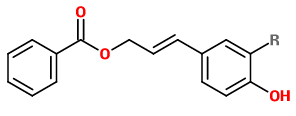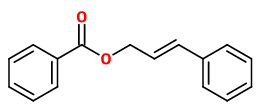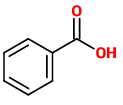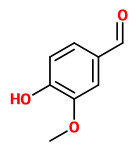Styrax tonkinensis (Pierre) Craib et Hartwich - Styracaceae - Siam Benzoin, Siam-Benzoeharzbaum
Tree 6-30 m tall, native to Southeast Asia (Cambodia, Laos, Thailand, Vietnam, China); bark dark gray; leaves alternate, leaf blade elliptic to ovate, margin entire or apically serrate; flowers 1.2-2.5 cm, white.
http://www.efloras.org/florataxon.aspx?flora_id=2&taxon_id=200017762
„Benzoin resin is a common ingredient in incense-making and perfumery because of its sweet vanilla-like aroma and fixative properties.“ https://en.wikipedia.org/wiki/Benzoin_resin
„Tincture of benzoin has two main medical uses: as a treatment for damaged skin in the „Compound“ form, and as an inhalant in the non-Compound form.“ https://en.wikipedia.org/wiki/Tincture_of_benzoin
Main components of benzoin resin are coniferyl benzoate (60-80%), p-coumaryl benzoate (10-15%), cinnamyl benzoate, and benzoic acid. Vanillin (0.3%) as minor component has a great impact on the scent of benzoin.
[Stahl, V.E., and W. Schild., Pharmazeutische Biologie, 4, Drogenanalyse., 1981, 282]
The resin of various species of Styrax trees (Styracaceae) is called benzoin. Main producing species is Styrax tonkinensis. Benzoin of S.tonkinensis is commercially known as 'Siam benzoin', as it was traded through the kingdom of Siam, present Thailand. Historical data from China suggest that it was first exploited and traded from North Sumatra (8th-9th century). Later (12th century) it also came from continental South-East Asia. The word benzoin derive from the Arabic lubanjawi, frankincense of Sumatra (The first Arab travellers called both Java and Sumatra 'Jawa').
[Experiences in benzoin resin production in Sumatra, Indonesia. Katz, E., Goloubinoff, M., Ruiz Perez, M., Michon, G., in: Mugah, J.O., Chikamai, B.N., Mbiru, S.S., Casadei, E.: Conservation, management and utilization of plant gums, resins and essential oils. (Nairobi 1997), 1998, 56-66] http://www.fao.org/3/a-x0098e.pdf#page=62
Results of patch testing to compound tincture of benzoin in 477 patients showed that it is a common contact allergen. „Twenty-eight of these patients had cross-reactions to similar allergens (fragrance mix, balsam of Peru, colophony and tea tree oil). Of the 14 patients with a strong positive reaction to compound tincture of benzoin, 11 had at least one other positive cross-reaction to the above allergens.“
[Compound tincture of benzoin: A common contact allergen?., Scardamaglia, L., Nixon, R., Fewings, J., Australasian journal of dermatology, 44(3), 2003, 180-184]
The volatile extract of Siam benzoin gum contained mainly benzyl benzoate (76-80%) and benzoic acid (12.5%), with some methyl benzoate (1.5%) and allyl benzoate (1.5%).
[Volatile constituents of benzoin gums: Siam and Sumatra. Part 1. Fernandez, X., Lizzani‐Cuvelier, L., Loiseau, A. M., Périchet, C., Delbecque, C., Flavour and fragrance journal, Vol.18(4), 2003, 328-333]
Siam benzoin found (HPLC) composed mainly of coniferyl benzoate. Minor components were benzoic acid, isovanillin, lubanol, and p-coumaryl benzoate (but no free cinnamic acid).
[Analytical investigation of styrax and benzoin balsams by HPLC-PAD-fluorimetry and GC-MS., Hovaneissian, M., Archier, P., Mathe, C., Culioli, G., Vieillescazes, C., Phytochemical Analysis, 19(4), 2008, 301-310]
There is no evidence that tincture of benzoin, a solution of benzoin resin (1:5) dissolved in ethanol (90%), which is formerly used to treat bronchitis and colds, has a significant effect on these ailments.
[Hagers Handbuch der Pharmazeutischen Praxis, Springer 2010]
Benzoin balsam is a a pathological product resulting from tapping Styrax trees, it does not exude naturally from the trunk. Ethanolic extracts of the balsam contain volatile (30-40%) and nonvolatile (60-70%) compounds. Major non-volatile components are coniferyl benzoate (Siam benzoin: 29-56% of the crude material), cinnamyl cinnamate, and p-coumaryl cinnamate, minor ones p-coumaryl benzoate, coniferyl derivatives, morinol derivatives, cinnamyl benzoate, coniferyl cinnamate, siaresinolic acid, sumaresinolic acid, and 3-ox-siaresinolic acid. Important volatile components of the ethanolic extract are vanillin, benzoic acid (Siam benzoin: 31-36% of the crude material), cinnamic acid (Sumatra benzoin: 16-26% of the crude material), and benzyl cinnamate.
[New insights in the chemical composition of benzoin balsams., Burger, P., Casale, A., Kerdudo, A., Michel, T., Laville, R., Chagnaud, F., Fernandez, X., Food chemistry, 210, 2016, 613-622]
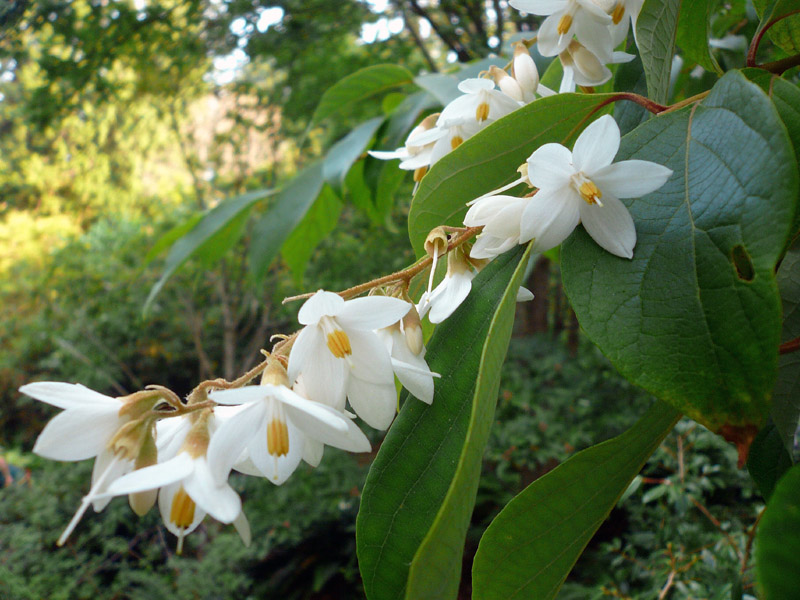
Styrax tonkinensis photo by Douglas Justice, Curator of Collections, David C. Lam Asian Garden, UBC Botanical Garden
http://botanyphoto.botanicalgarden.ubc.ca/2010/08/styrax_tonkinensis/
